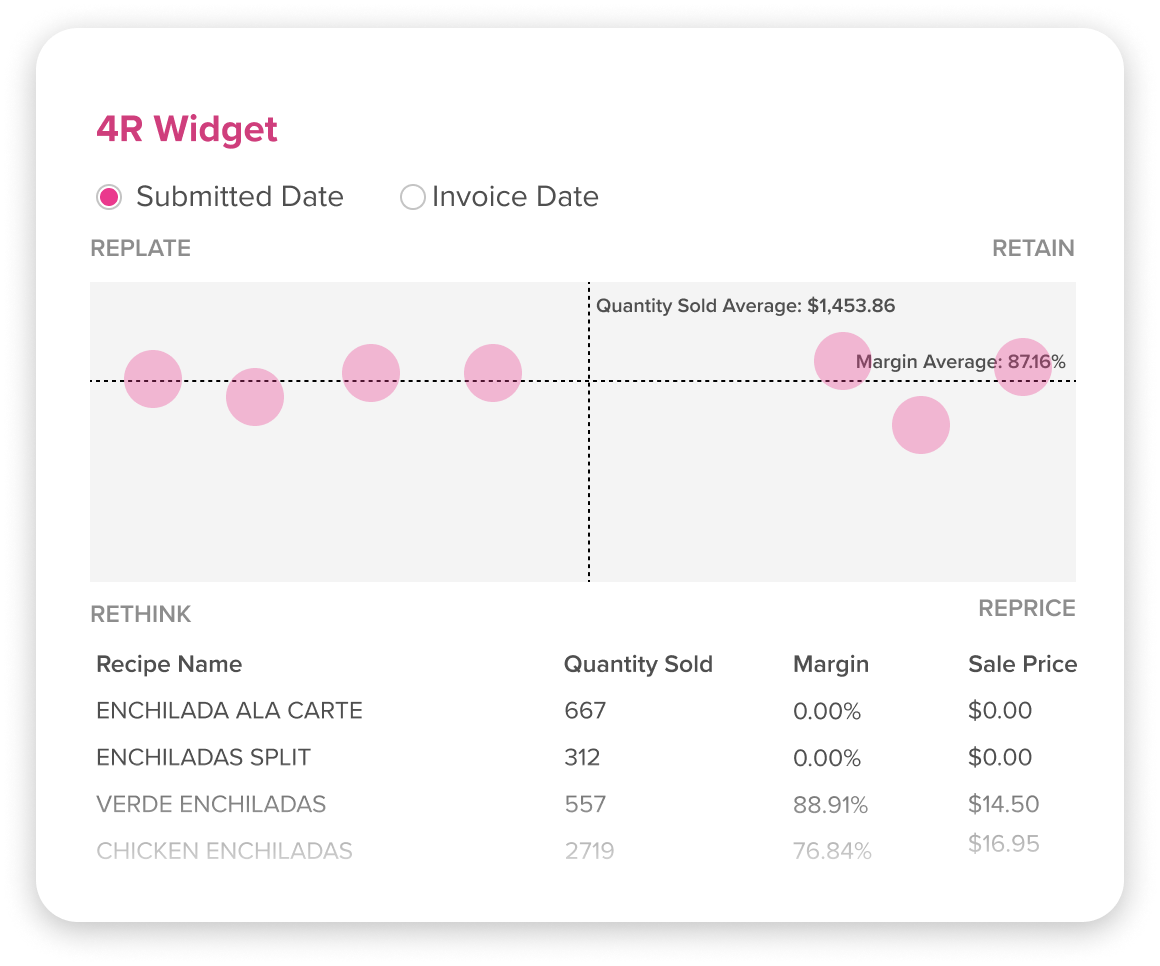Imagine applying the meticulous precision of engineering to the art of crafting a restaurant menu. Menu engineering is not just about listing dishes; it’s a strategic blueprint for boosting profits and delighting diners, making it a vital tool for savvy restaurant owners.
Engineering a menu involves analyzing dishes to determine their popularity and profitability, enabling restaurateurs to make informed decisions about what to keep, modify, or remove. By embracing this process, restaurant owners can ensure their locations thrive, even in a competitive market.
Understanding Menu Engineering
Optimizing a menu involves an analytical process focused on enhancing the menu’s design and structure. Ultimately, this process aims to improve the sales performance of each individual dish and the overall menu.
The Menu Engineering Process
As a restaurant owner, you can benefit from a structured approach to evaluating and refining your menu offerings. By strategically enhancing your menu, you can increase profitability and customer engagement, leading to a more successful dining experience. This essential process involves these key steps:
- Conduct a Menu Analysis – Perform a high-level review of each menu item to assess its performance and contribution to your overall sales.
- Identify Top-Performing Items and Problem Areas – Using your menu analysis data, categorize menu items by popularity and sales performance.
- Implement Changes Based on the 4 R’s – Make menu changes that align with the 4 R’s to determine which items to Retain, Reprice, Replate, or Rethink.
- Monitor and Track Performance – Menu engineering is not a “one and done” task, but rather an ongoing process that requires reassessment and updating as your customer preferences change over time.
Using the 4 R’s
Once you identify items that aren’t working, you may be tempted to scrap them and start from scratch. Thankfully, the 4 R’s can help you identify simple steps for improving the performance of a dish without completely starting over.
- Retain – When a menu item has high sales and high margins, keep it on your menu in its current form.
- Reprice – When an item has high sales but low margins, choose a different price structure.
- Replate – When an item has low sales and high margins, consider how you might change the dish’s plating to better appeal to customers. This could involve rebranding the item or moving its location in your menu to garner more attention.
- Rethink – When an item has low sales and low margins, it’s time to rethink how you offer it to customers. While this may involve removing the item, you could also revamp the recipe to improve the margins and change the dish presentation to improve sales and profitability.

How to Conduct a Menu Analysis
Begin this process by analyzing your menu to evaluate each dish’s sales and profitability. This assessment identifies what works well and what doesn’t, helping to clarify what changes you’ll need to make in future steps. To conduct a menu analysis, follow these steps:
- Select a Timeframe – Choose an appropriate timeframe, such as monthly or quarterly, to serve as the basis for your analysis. If your sales trends tend to fluctuate considerably, aim for a shorter time frame.
- Gather Cost and Sales Data – Pull the sales data, including units sold and corresponding revenue, and the cost to produce the dish for each menu item during the time period.
- Calculate Profitability – Calculate the difference between the total cost and total revenue for each item to determine its contribution to your bottom line for the period.
- Categorize Menu Items – Based on the popularity and profitability, categorize each menu item as “High Margin/High Sales”, “High Margin/Low Sales”, “Low Margin/High Sales”, or “Low Margin/Low Sales”.
- Analyze Findings – Use all the data gathered in your analysis to identify sales trends, high-performing areas that should be retained, and problem areas that need attention.
Using Your Menu Analysis to Revamp Your Menu
After you’ve completed a thorough menu analysis, you will have invaluable insight into the strengths and weaknesses of your current menu. Each of your menu items will now be categorized, and you can use the 4 R’s to help you more easily identify which items to promote, adjust, or remove from your current menu. As you move into the menu revamp phase of this process, making small adjustments using tried and true menu engineering strategies can greatly impact your restaurant’s profitability.
Menu Engineering Strategies
To effectively enhance your menu’s appeal and profitability, consider implementing the following proven menu engineering strategies:
- Adjust item placement and menu layout – Placing high-margin items in strategic locations on the menu and using visuals or descriptions to highlight them can drive sales and improve overall profitability.
- Change prices – Adjust prices on popular dishes with low margins or reprice items with high margins/low sales to find a healthy balance between customer perceptions and business objectives.
- Highlight high-margin items – Prominently feature the dishes that provide the most value to your bottom line and are also the most popular with customers. Use visual cues such as boxes or icons and create enticing descriptions to drive customers toward these profitable options.
- Incorporate local and seasonal options – Feature dishes made from fresh, locally sourced ingredients that change with the seasons.

Best Practices for Menu Engineering
To boost the effectiveness of your menu engineering process, incorporate best practices alongside the structured steps outlined above. By optimizing your menu to align with business goals and customer preferences, you’ll create a compelling dining experience that fosters customer loyalty and maximizes profitability. Consider these key best practices:
Involve Your Staff in the Process
Involving staff members in the menu engineering process not only empowers them but also offers valuable insights that owners may overlook. As front-line employees, they interact directly with customers and can provide empirical feedback about preferences, trends, and pain points. Furthermore, incorporating their suggestions fosters a sense of ownership and accountability, enhancing overall team morale and performance.
Harness Technology to Improve Efficiency
Leveraging technology significantly streamlines the menu engineering process and saves valuable time. By using a comprehensive technology solution such as Back Office, restaurant owners can automate data collection and analysis, eliminating the manual effort of calculating and analyzing profitability of individual dishes.
Utilize Digital Menus and Online Platforms for Testing
Digital menus and online platforms provide the flexibility to change menu offerings quickly. You can use these tools to make adjustments in real-time, allowing for the quick addition or removal of items without incurring the costs associated with printing new menus. This function enhances operational efficiency and allows you to quickly adapt to customer preferences, seasonal changes, or inventory fluctuations.
FAQs
Is menu engineering really necessary?
Menu engineering is essential for restaurant managers who aim to maximize profitability and enhance customer satisfaction. Regularly utilizing this process allows you to adapt to the changing market, ensuring your menu appeals to diners and drives sustainable business growth.
How often should I revamp my restaurant’s menu?
Most restaurant owners should revamp their menus at least once or twice a year, but this can vary based on your establishment’s unique needs and customer preferences. Seasonal changes, emerging food trends, and sales data analysis can all prompt more frequent updates to ensure the menu remains optimized for your target audience.
How do I know if my menu needs some engineering?
Watch for key indicators to determine if your menu requires reengineering. For example, you may have a noticeable decline in sales of once-popular items, or a substantial period could have passed since your last menu evaluation. Additionally, be mindful of changing customer preferences and rising competition, as these factors can signal the need for menu adjustments to enhance profitability and customer satisfaction.
How much can I really save with menu engineering?
Menu engineering can lead to substantial savings, with some restaurateurs reporting increased profitability of 10-20% after implementing effective menu strategies. By optimizing item placement, pricing, and menu offerings, restaurants can significantly enhance customer spending and reduce costs associated with underperforming dishes.
Mastering Menu Engineering with Back Office
Mastering menu engineering is vital for restaurant operators looking to enhance profitability and create satisfying dining experiences. By understanding the structured steps of menu engineering, involving staff in collaborative processes, and leveraging technology for efficiency, restaurant owners can adapt their offerings to meet customer preferences and seasonal trends effectively. Regular menu reviews and adjustments, guided by data analysis and feedback, will ensure that the menu remains appealing, ultimately fostering customer loyalty and driving growth.
To experience the benefits of a streamlined menu engineering process, reach out to the Back Office team for a free demo. Discover how our comprehensive software solutions can empower you to make informed decisions, improve operational efficiency, and elevate your restaurant’s success.




